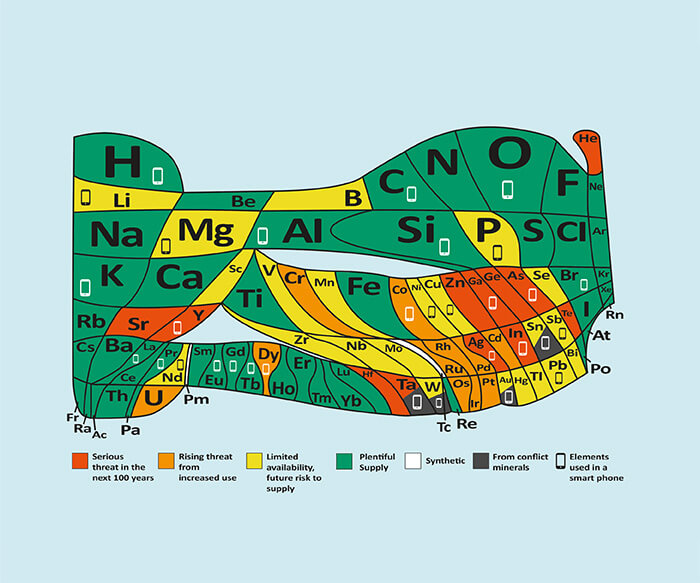Join us in wishing the Periodic Table a happy 150th anniversary!
It seems that the years have taken their toll, however. On a new version published by the European Chemical Society, each of the 118 elements has been color-coded to show how vulnerable they are to dissipation - in short, the more we use them, the harder they will be to recover.
Elements such as silver (Ag), helium (He) and strontium (Sr) are the most under threat – and many of the elements “in the red” play an important part in our technology, from MRIs to smartphone screens to deep sea diving equipment. The chart also shows (in black) elements that could be more ethically sourced, known as “conflict minerals” because wars are fought and lives lost over their ownership.
This version of the periodic table provides a striking reminder that we need to apply the five Rs – Refuse, Reduce, Reuse, Repurpose, Recycle – at a fundamental level. However, you’ll be glad to see that oxygen – for now, at least – is still in plentiful supply.





